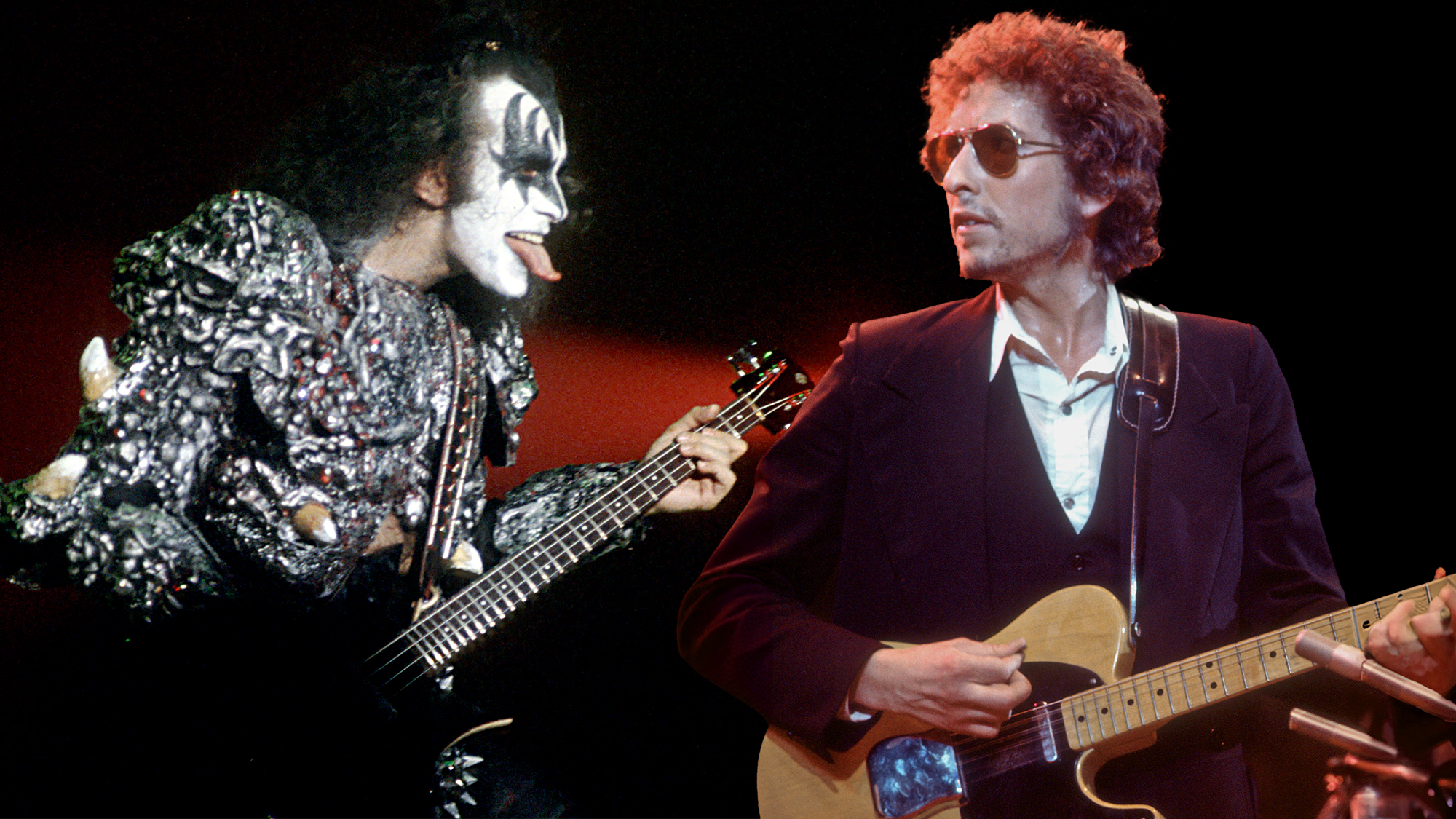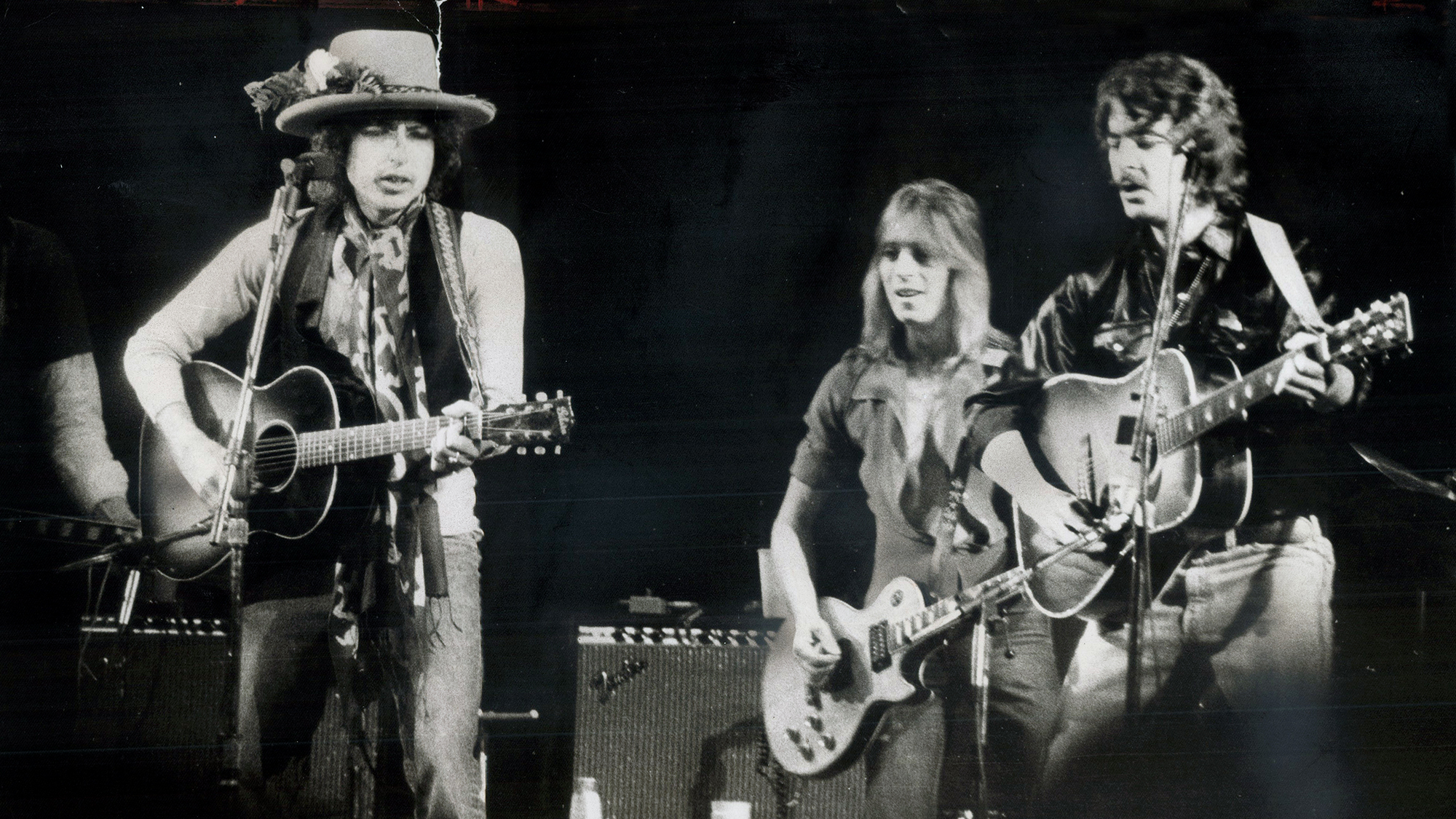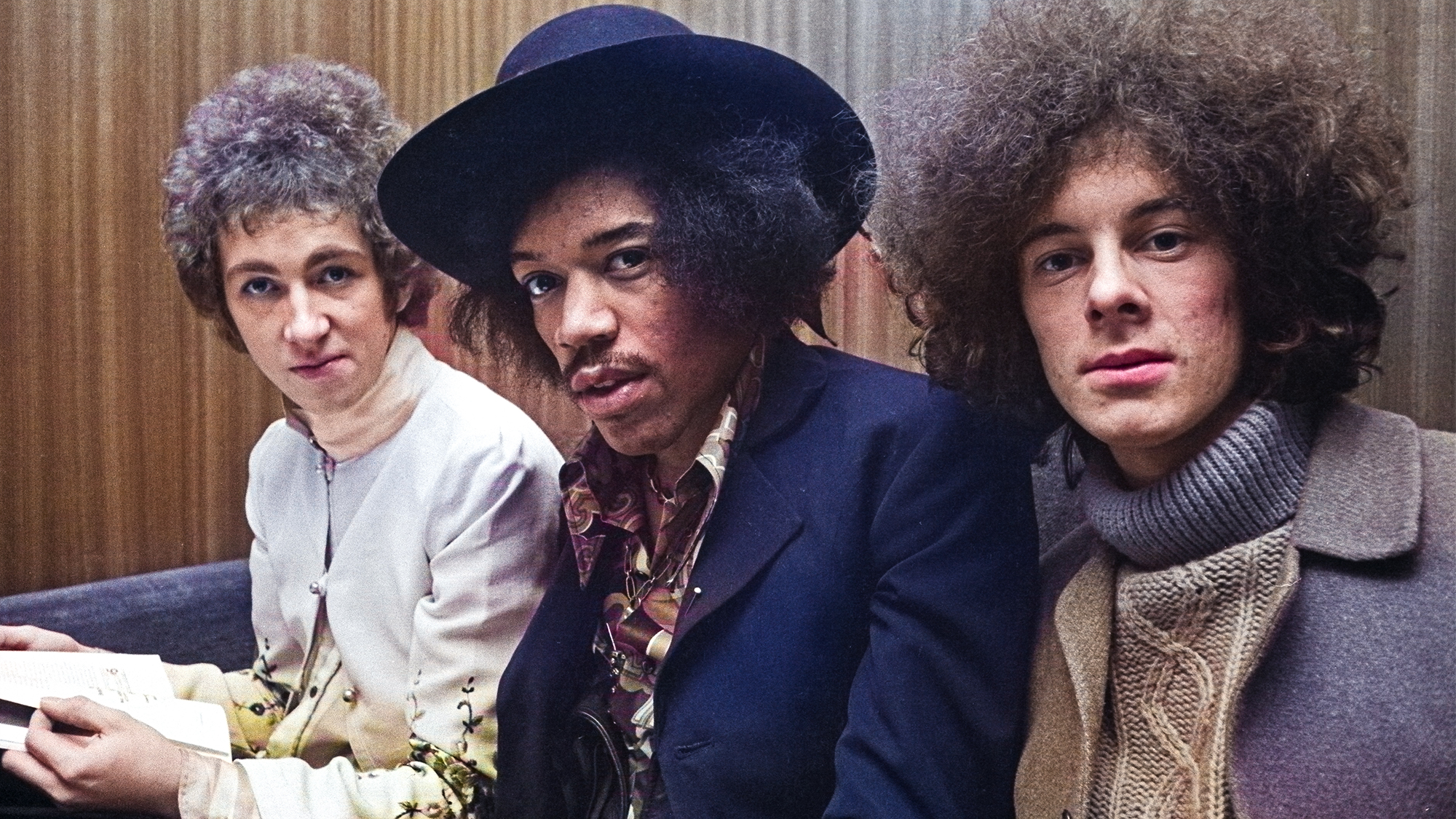"An unmarked van shows up at my house, and Bob gets out with an acoustic guitar in his hand.” The time Bob Dylan picked a fight with Kiss and ended up writing a song with Gene Simmons
The 1979 feud was among the strangest in rock and was sparked during Dylan's born-again period

Bob Dylan hasn’t been shy about picking fights with his fellow artists. Over the years he’s had beefs with Led Zeppelin, the Rolling Stones, “American Pie” songwriter Don McLean, and even John Lennon, who he felt had copied his musical style on at least one too many occasions.
But one group in particular got his ire in the late 1970s, after the born-again Dylan began writing almost exclusively on Christian themes. From roughly 1979 to 1981, he explored evangelical Christianity in the music for his three-album "gospel trilogy," which consists of Slow Train Coming, Saved, and Shot of Love.
Around the same time, the Satanic Panic was brewing. It would come to full force in the 1980s as moral outrage over alleged cases of Satanic ritual abuse spread through the U.S. In the lead-up to it, Kiss were singled out for supposedly encouraging satanism, largely thanks to the long-standing rumor that their name — which the band spelled in all caps, like an acronym — stood for Knights in Satan’s Service, something which the band denied for years.
Apparently Dylan never got the memo. While performing in Arizona in 1979, he became fed up when the unruly crowd began calling out for his more popular, secular tunes. When one of them yelled out “rock and roll!,” the folksinger used the occasion to provide a bit of spiritual advice.
“If you want rock and roll, you go down and rock and roll,” he said according to the Portland Mercury. “You can go and see Kiss and you can rock and roll all the way down to the pit.”

What was especially odd about Dylan’s remark was that he had himself claimed to take a cue from the band to paint his face white for some shows on his Rolling Thunder Revue tour in 1975 and 1976.
In Martin Scorsese's 2019 Netflix documentary, Rolling Thunder Revue, he said the revue’s violinist, Scarlet Rivera, took him to see the group perform in Queens. But Dylan didn’t meet her until 1975, by which point Kiss were famous and no longer playing clubs. Most likely it was all a fabrication made in jest.
All the latest guitar news, interviews, lessons, reviews, deals and more, direct to your inbox!
Whatever the case, Dylan’s acknowledgement of the group certainly pleased its bass guitar player, Gene Simmons. A longtime admirer of Dylan, he was thrilled to have the folk icon acknowledge his group.
Years later, in 1991, while Dylan was in-between projects, Simmons decided to test his luck and see if the singer would write a song with him.
“Everybody buys lottery tickets. What are their chances of winning? Not much,” Simmons explained to The Pulse of Radio. “So what? There is a chance you can win, and I’m like that.
“So I called his manager: ‘Can I speak with Bob?’
“‘What do you wanna talk to him about?’
“‘I… I wanna write a song with Bob.’”
To Simmons’ surprise, Dylan was game.
And all of a sudden, within two days, an unmarked van shows up at my house, and Bob gets out with an acoustic guitar in his hand,. I mean, it was just like that.”
— Gene Simmons
“And all of a sudden, within two days, an unmarked van shows up at my house, and Bob gets out with an acoustic guitar in his hand, and tells his driver, ‘I’ll see you at the end of the day,’ comes up, and we start strumming. I mean, it was just like that.”
Simmons was thrilled, but he decided to save the song — “Waiting for the Morning Light” — for himself rather than give it to Kiss. It finally came out in 2004 on Simmons’ second solo album, Asshole.
“Bob came up with the chords, most of them, and then I took it and wrote lyrics, melody, the rest of it,” he explained. “We understood each other right away. He picked up an acoustic guitar, and we just tossed it back and forth: ‘How ’bout this, how ’bout that?’
“And he started to strum, because he — at least with me — tended to talk and strum guitar at the same time. And as soon as I heard the first three or four chords, I went, ‘Wait, wait, what’s that? Do that again.’ So I went and started to write a lyric around that.”
A second song from that session, “Na, Na, Na, Na,” was released later on 2017's Gene Simmons Vault, a collection of his demos from 1966. to 2016.
Oddly, shortly after the release of Asshole, Simmons found himself in a new feud with another unlikely adversary: Carlos Santana. The spiritual guru of guitar took issue not with Kiss but with the bassist himself.
“He's not a musician, he's an entertainer,” the guitarist declared. “A musician is Coltrane, Bob Marley. Kiss is Las Vegas entertainment, so he wouldn't know what music is anyway. That's why he wears all that stuff.
“Simmons hides his talent beneath costumes and makeup. A musician doesn’t need the mask or the mascara. There’s a difference between an entertainer and a musician.”
In response, Simmons would say only, “Not everyone likes the same meal.”
But the words stung, and four years later, he shot back during an interview for Kiss’s then-new Sonic Boom album.
"It's time for us to go out and show the little boys how the big boys do it," the bassist declared. "I'm sick and tired of these bands like Carlos Santana looking at his shoes and thinking that's a rock concert. Get off the stage!"
Unlike Dylan, Santana probably won’t be getting a request to collaborate with Simmons.
Elizabeth Swann is a devoted follower of prog-folk and has reported on the scene from far-flung places around the globe for Prog, Wired and Popular Mechanics She treasures her collection of rare live Bert Jansch and John Renbourn reel-to-reel recordings and souvenir teaspoons collected from her travels through the Appalachians. When she’s not leaning over her Stella 12-string acoustic, she’s probably bent over her workbench with a soldering iron, modding gear.

